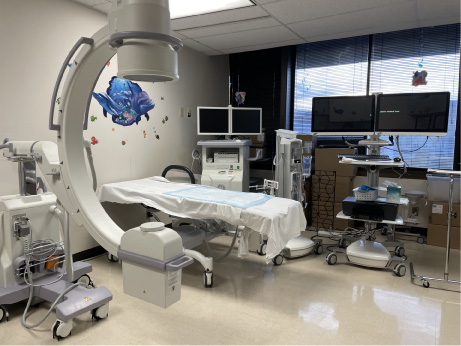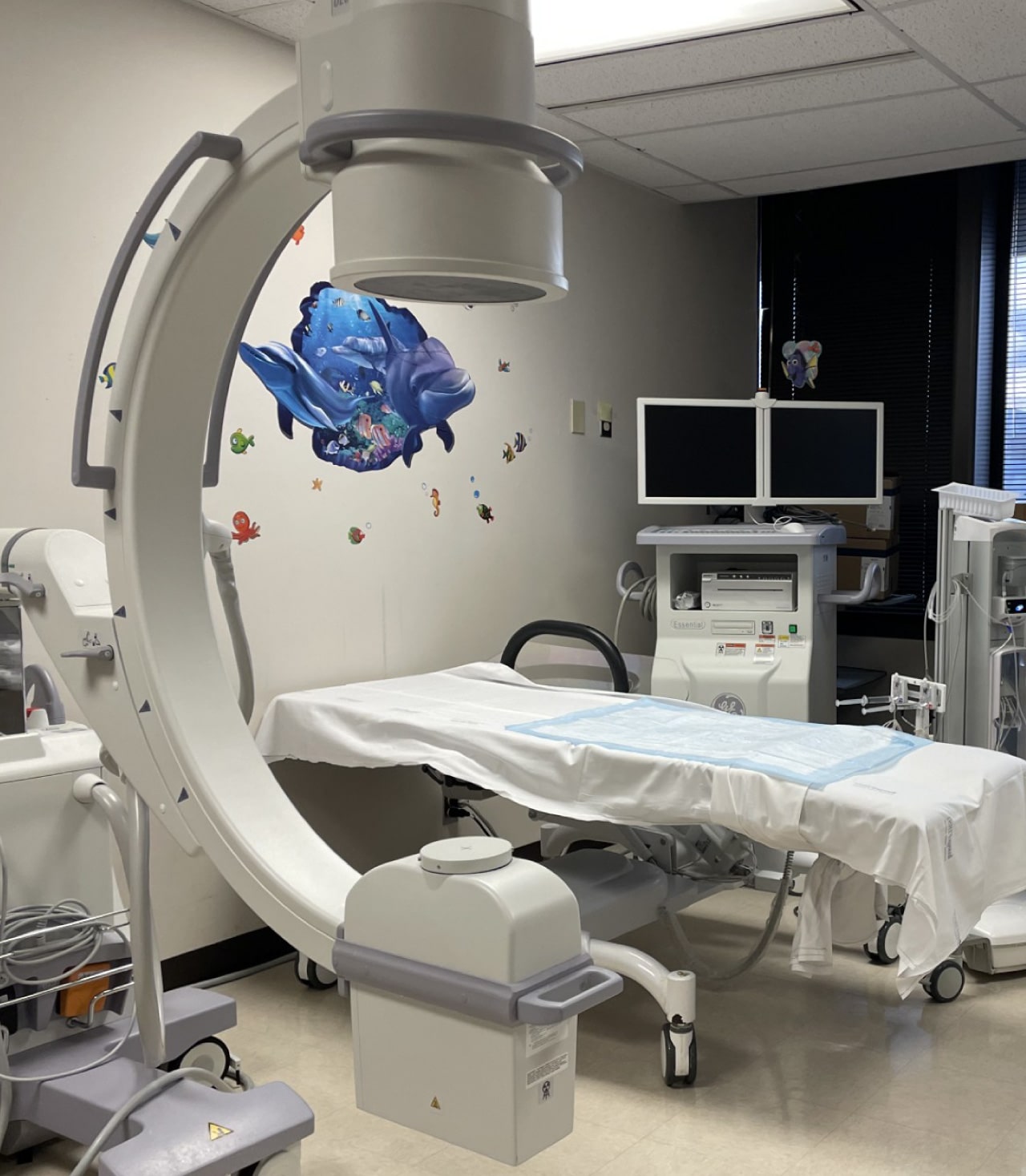Urodynamic and ultrasound (sonogram) studies are performed at our Methodist Plaza location in San Antonio, TX. These are specialized tests that help us understand the functioning of the kidneys as well as the entire urinary tract system in children, adolescents, and young adults. We have the most up to date urodynamic and ultrasound machines (as well as fluoroscopic-X-Rays equipment), and we are constantly monitoring the proper functioning of them to make sure it fulfills the regulatory standards in the healthcare industry.
Urodynamic studies:
Urodynamic studies are specialized tests that help doctors understand how your child’s bladder and lower urinary system are working. These studies are often recommended if your child has neurogenic or severe non-neurogenic bladder dysfunction. These conditions can be associated with other neurological symptoms, recurrent urinary tract infections, constipation, neurogenic bowel, fecal and urinary incontinence, etc.

During the test, your child will typically lie on an exam table or sit in a special chair. A thin, flexible tube called a catheter is gently inserted into the bladder through the urethra (the tube through which urine exits the body). This allows the bladder to be filled with sterile fluid (sometimes mixed with contrasted material for simultaneous X-Rays), and our technician can observe how it behaves as it fills and empties. Another small catheter or sensor may be placed in the rectum to measure pressure in the abdomen. These tubes are very small, and the staff will use a gel to minimize any discomfort your child may feel. As the bladder fills, your child may be asked to describe sensations such as the need to urinate or feelings of fullness. The test measures bladder volumes, pressures, contractions and emptying. Your child may also be asked to urinate (if able) while the catheters are in place, so the doctor can assess how urine flows and whether there is any blockage or leakage.
The entire process usually takes about an hour, and parents are allowed to stay with their child to provide comfort and support. While the procedure may sound complex, it is designed to be as comfortable as possible for your child, and our experienced team will guide you through every step of the process.
Ultrasound studies:
Ultrasound imaging is a safe, non-invasive way to examine different parts of your child’s body, such as the kidneys (renal ultrasound), bladder, or testicles. These procedures use sound waves to create pictures of internal structures, and they do not involve radiation, making them ideal for children. Knowing what to expect can help ease your child’s and your concerns.

Renal Ultrasound
Urogenital sinus is a condition where the urethra and vagina share a single opening instead of separate ones. This is sometimes seen in individuals with congenital adrenal hyperplasia (CAH), a condition that affects hormone production.
Bladder Ultrasound
Bladder ultrasounds evaluate how well the bladder is working and check for any abnormalities. If your child is old enough, they may be asked to drink water before the exam to ensure their bladder is full, which helps provide better images. During the test, your child will lie on their back while the sonographer applies gel to their lower abdomen. The transducer is gently moved across the area to capture images of the bladder when it is full and after your child urinates. This allows the doctor to see how completely the bladder empties. Like the renal ultrasound, this procedure is quick and painless.
Testicular Ultrasound
A testicular ultrasound is done to evaluate pain, swelling, masses, or other issues in the testicles or scrotum. Your child will lie on their back, and a small towel may be used to position the area for better imaging. The sonographer will apply gel and use the transducer to take pictures of the testicles and surrounding tissues. The process is non-invasive and typically takes about 15–20 minutes. It may feel slightly cold or ticklish at first, but it is not painful.
Throughout all these studies, the parents (or caregivers) are allowed to stay with their child to provide comfort. The procedures are safe and most children tolerate them well.
Once the test is complete, the results are reviewed by your doctor, who will explain the findings and any further steps.



